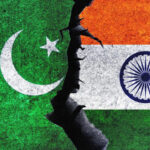Disruptions in the supply chain and panic buying can lead to price spikes: Hans Timmer
In a report released this month, the World Bank has predicted a ‘dire’ situation for South Asia due to the economic impact of measures to counter the novel coronavirus pandemic, suggesting that the eight SAARC countries (Afghanistan, Bangladesh, Bhutan, India, Nepal, Pakistan, Maldives and Sri Lanka) will experience their worst economic performance in 40 years, with at least half of them falling into a deep recession. In an exclusive interview to The Hindu, the author of the report and Chief Economist for South Asia Hans Timmer says managing migrant returns, service sector revenue losses and ensuring food security for the poorest are major priorities for the region.
The forecast for the South Asian economy in the WB report, with an expected drop from 6.3% growth to 1.8% – 2.8%. is quite significant. Could the drop be even bigger, given that we don’t yet know when economic activity will be fully reopened?
This forecast already includes many adverse impacts. The upper and lower bounds are based on two scenarios for advanced economies: one with a two-months lockdown of advanced economies, the other with a four-months lockdown of these economies. These scenarios translate for South Asia into sharp declines in exports, disruptions in global value chains, deterioration of investment sentiment, reversal of capital flows, and reduced remittances. Our upper and lower bound forecasts also assume sharp declines in domestic hospitality services. But the drop in growth can indeed be bigger. In the report we mention that we calculated what we call a “worst case scenario”, in which we assume a prolonged lockdown of South Asia economies: an extended lockdown for three months and a more partial lockdown in subsequent quarters. In that case, we ended up with negative growth for the region, a contraction of 1%.
The World Bank has endorsed India’s strict 40-day lockdown to contain transmission of the novel coronavirus, which other South Asian countries have followed in varying degrees. How well do you think this will work if extended, especially given the economic impact?
I have been impressed by the reaction of the India government and other governments in South Asia. With limited health-care capacity, it is important to contain, or at least mitigate, the spread of COVID-19. But, with a high population density, this is a difficult task. Containment of the pandemic is especially challenging among slum dwellers, domestic migrant workers and refugees. An additional complication is that the lockdown deprives the most vulnerable people of their income. The conclusion is that the lockdown is necessary, but not sufficient. It has to be complemented with food distribution, temporary work programmes and a system of testing and tracing, which is needed to reopen the economy. The temporary work programme could focus on food delivery, production of protective equipment, disinfection of public spaces and on the testing and tracing system. It is commendable that the Indian government is rolling out a tracing system now.
Most South Asian nations depend on migrant remittances. How much do you think layoffs abroad added to the domestic migrant labour crisis (in India, in particular), will change the labour market, and how should countries prepare for this?
It is likely that migrant workers, especially in the Gulf countries, will return home, even if many are still stuck abroad at the moment. It is the consequence of the global recession and the sharp drop in oil prices. They will need to find work at home and will indeed compete with domestic migrant workers. That is why the government should create conditions under which the economy can be reopened and should play an active role in job creation.
How does South Asia as a region compare with other regions in the world in terms of the impact of the novel coronavirus? There are studies suggesting the pandemic has grown more slowly in South Asia than other parts like Europe, North America, East Asia…
Fast containment action after detection of first COVID-19 cases may have helped, and evidence around the world shows that strict measures early on can help reduce contagion. Increase in testing will help guide future actions.
How important is food security and releasing strategic food reserves at this point? How would you rate different countries in the region on their ability to ensure distribution to the most vulnerable? We have seen massive food lines, shortages in both India and Pakistan.
This is one of the big concerns. Disruptions in the supply chain and panic buying can lead to price spikes. That, together with loss of income of many informal workers, can lead to food shortages for the most vulnerable. This is high priority. Releasing strategic reserves is one tool in the toolbox. Work programmes and food deliveries are other tools. Export bans will backfire as they will disrupt food supply chains in the region further.
The WB report identifies the service sector as worst hit and tourism, for example in the Maldives as one of the biggest revenue losses. Can South Asia consider new ways to regenerate employment in these sectors, or will it have to look at other sectors?
Probably both. Tourism will not return to normal till effective vaccines become widely available. There will be demand for safe tourism. That might be an opportunity for Maldives that with its many atolls and high-end tourism has an opportunity to test tourists and keep them away from large crowds. There might be also more demand for digital services like remote learning or other remote services and for delivery of e-commerce sales. It is likely that more jobs outside the tourism industry can be created.
Coronavirus | Preventing food shortages is a high priority for South Asia, says World Bank economist
Disruptions in the supply chain and panic buying can lead to price spikes: Hans Timmer
In a report released this month, the World Bank has predicted a ‘dire’ situation for South Asia due to the economic impact of measures to counter the novel coronavirus pandemic, suggesting that the eight SAARC countries (Afghanistan, Bangladesh, Bhutan, India, Nepal, Pakistan, Maldives and Sri Lanka) will experience their worst economic performance in 40 years, with at least half of them falling into a deep recession. In an exclusive interview to The Hindu, the author of the report and Chief Economist for South Asia Hans Timmer says managing migrant returns, service sector revenue losses and ensuring food security for the poorest are major priorities for the region.
The forecast for the South Asian economy in the WB report, with an expected drop from 6.3% growth to 1.8% – 2.8%. is quite significant. Could the drop be even bigger, given that we don’t yet know when economic activity will be fully reopened?
This forecast already includes many adverse impacts. The upper and lower bounds are based on two scenarios for advanced economies: one with a two-months lockdown of advanced economies, the other with a four-months lockdown of these economies. These scenarios translate for South Asia into sharp declines in exports, disruptions in global value chains, deterioration of investment sentiment, reversal of capital flows, and reduced remittances. Our upper and lower bound forecasts also assume sharp declines in domestic hospitality services. But the drop in growth can indeed be bigger. In the report we mention that we calculated what we call a “worst case scenario”, in which we assume a prolonged lockdown of South Asia economies: an extended lockdown for three months and a more partial lockdown in subsequent quarters. In that case, we ended up with negative growth for the region, a contraction of 1%.
The World Bank has endorsed India’s strict 40-day lockdown to contain transmission of the novel coronavirus, which other South Asian countries have followed in varying degrees. How well do you think this will work if extended, especially given the economic impact?
I have been impressed by the reaction of the India government and other governments in South Asia. With limited health-care capacity, it is important to contain, or at least mitigate, the spread of COVID-19. But, with a high population density, this is a difficult task. Containment of the pandemic is especially challenging among slum dwellers, domestic migrant workers and refugees. An additional complication is that the lockdown deprives the most vulnerable people of their income. The conclusion is that the lockdown is necessary, but not sufficient. It has to be complemented with food distribution, temporary work programmes and a system of testing and tracing, which is needed to reopen the economy. The temporary work programme could focus on food delivery, production of protective equipment, disinfection of public spaces and on the testing and tracing system. It is commendable that the Indian government is rolling out a tracing system now.
Most South Asian nations depend on migrant remittances. How much do you think layoffs abroad added to the domestic migrant labour crisis (in India, in particular), will change the labour market, and how should countries prepare for this?
It is likely that migrant workers, especially in the Gulf countries, will return home, even if many are still stuck abroad at the moment. It is the consequence of the global recession and the sharp drop in oil prices. They will need to find work at home and will indeed compete with domestic migrant workers. That is why the government should create conditions under which the economy can be reopened and should play an active role in job creation.
How does South Asia as a region compare with other regions in the world in terms of the impact of the novel coronavirus? There are studies suggesting the pandemic has grown more slowly in South Asia than other parts like Europe, North America, East Asia…
Fast containment action after detection of first COVID-19 cases may have helped, and evidence around the world shows that strict measures early on can help reduce contagion. Increase in testing will help guide future actions.
How important is food security and releasing strategic food reserves at this point? How would you rate different countries in the region on their ability to ensure distribution to the most vulnerable? We have seen massive food lines, shortages in both India and Pakistan.
This is one of the big concerns. Disruptions in the supply chain and panic buying can lead to price spikes. That, together with loss of income of many informal workers, can lead to food shortages for the most vulnerable. This is high priority. Releasing strategic reserves is one tool in the toolbox. Work programmes and food deliveries are other tools. Export bans will backfire as they will disrupt food supply chains in the region further.
The WB report identifies the service sector as worst hit and tourism, for example in the Maldives as one of the biggest revenue losses. Can South Asia consider new ways to regenerate employment in these sectors, or will it have to look at other sectors?
Probably both. Tourism will not return to normal till effective vaccines become widely available. There will be demand for safe tourism. That might be an opportunity for Maldives that with its many atolls and high-end tourism has an opportunity to test tourists and keep them away from large crowds. There might be also more demand for digital services like remote learning or other remote services and for delivery of e-commerce sales. It is likely that more jobs outside the tourism industry can be created.






NO COMMENT